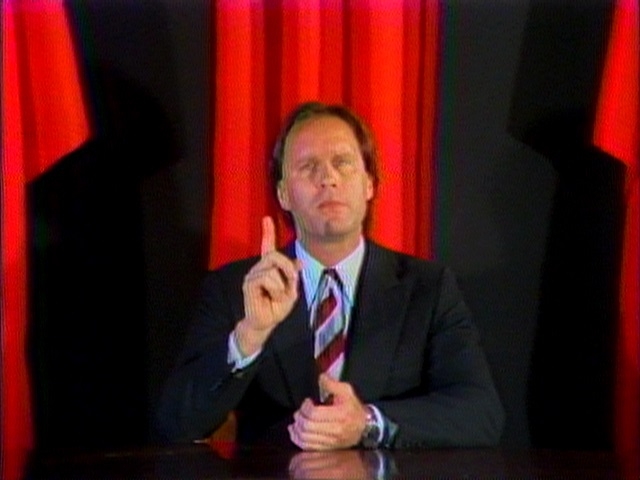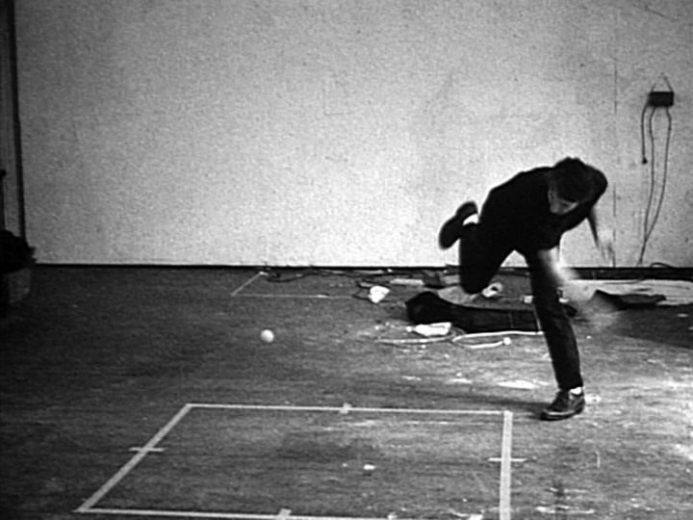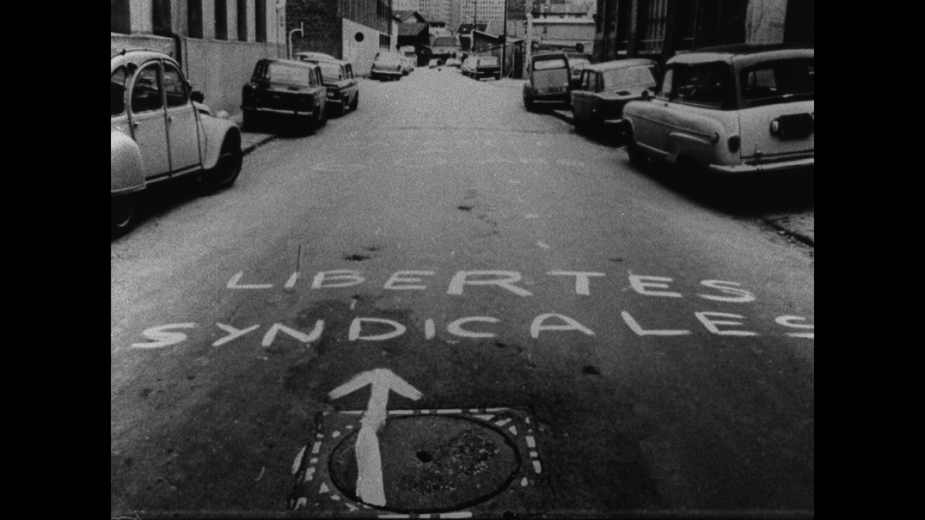
VIDEOART IN AUGUST #4
Guest Curator: Lori Zippay
Bruce Nauman is recognized as one of the most important and influential figures in contemporary art. Born in Fort Wayne, Indiana in 1941, Nauman has forged a singular conceptual art practice across multiple media, including performance, film, video, sculpture, photography, and installation. Engaging language and the physical body to create a new artistic vocabulary, Nauman relentlessly questions the role of the artist and the function and process of making art.
In the late 1960s and early 1970s Nauman produced a pioneering series of 16mm films and half-inch video works that are among the most innovative and influential of their time, and which have continued to resonate for subsequent generations. Created by the artist alone in his studio, using his body as art object and his immediate environment as material, these works radically distill and redefine what it means to make art, in ways that are at once playful and philosophical.
Nauman came of age as an artist amidst the fertile artistic and political landscape of the U.S. in the late 1960s, absorbing the experimental art and ideas of choreographers and composers who were incorporating everyday movements and sound in dance and music, writers such as Samuel Beckett, and philosophers such as Ludwig Wittgenstein, whose “language games” were an acknowledged influence. Nauman’s early film and video works can be understood within the larger art historical framework of Post-Minimalism, as artists were expanding and challenging the contexts in which art was produced, seen and circulated. Investigating process through performance and treating the body as sculpture, Nauman used film and video to devise conceptual exercises that often exhibit an absurdist humor.
In these early moving image works, Nauman, dressed in black jeans and a white or black T-shirt, performs alone in real time before a stationary camera. Often he repeats a single action for an extended duration:, as in Playing a Note on the Violin While I Walk Around the Studio (1967-68) and Walk with Contrapposto (1968). In some works he uses his body to map out his studio environment in space and time, as in Dance or Exercise on the Perimeter of a Square (Square Dance), or to test the limits of his (and his viewer’s) physical endurance, as in Violin Film 1 (Playing the Violin as Fast as I Can) (1967-68) and Stamping in the Studio (1968), in which he performs that action for a grueling hour. In others he explores the technical parameters and meanings of the medium, such as the desynchronized audio of Bouncing Two Balls Between the Floor and Ceiling with Changing Rhythms (1967-68), or the extreme close-up and slow motion of Bouncing Balls (1969).
Nauman’s 1967 sculpture The True Artist Helps the World by Revealing Mystic Truths (Window or wall sign), created in the same period as these early films, is among his most iconic works. A neon sign—the kind typically seen in bars or shop windows—displays the titular sentence, written in cursive script in a blue spiral. The juxtaposition of the metaphysical text with the industrial material and advertising form is both comic and poetic. In an earlier drawing, The True Artist is an Amazing Luminous Fountain (Window or wall shade) (1966), the gnomic words are written around the edges of a sheet of paper. Like these cryptic pronouncements, which were created at a historical moment of social, artistic and political upheaval, Nauman’s contemporaneous moving image works also challenge the viewer to question the artist’s function in culture.
Working since 1979 in New Mexico, far from the epicenters of the international contemporary art world, Nauman continues to make art that defies expectations and easy categorization. In our current era of crisis and isolation, when the very meaning of “truth” has been challenged and artists are marketed as commodities, it is instructive to revisit Nauman’s sustained interrogation of the “true artist”—alone in the studio, using his body and the camera to make art that questions what it means to make art.
Lori Zippay is a New York-based curator, writer and consultant who has been active in media art exhibition, distribution and preservation for over thirty-five years. From the mid-1980s to 2019 she served as Executive Director of Electronic Arts Intermix (EAI), a nonprofit organization that is a leading resource for media art. She developed EAI’s archive of over 4,000 media artworks, initiated its pioneering video preservation program, inaugurated and co-authored its extensive online publications and digital resources, and established numerous long-range projects and artistic programs. She has curated numerous media-based exhibitions and video programs, including the survey Circa 1971: Film & Video from the EAI Archives for Dia:Beacon in 2012; lectured at institutions and presented at conferences around the world, including at The Museum of Modern Art, New York; Tate Modern, London; and Centre Georges Pompidou, Paris, among many others; written extensively on media art, and developed and consulted on curatorial, preservation and educational projects with emerging and established artists. She has served on numerous international festival juries, funding panels, symposia, and advisory boards. She currently serves on the Advisory Committees of Times Square Arts and Collaborative Cataloging Japan, and as Director Emerita of EAI.
Bouncing Two Balls Between the Floor and Ceiling with Changing Rhythms, Bruce Nauman
10’, 1967-68
In this film Nauman bounces two balls in the center of a square marked by tape on the studio floor. He throws them as hard as he can, trying to maintain a specific pattern, but the balls ricochet out of control as his moves become correspondingly jumpy and unpredictable. The film was shot with a stationary camera in the studio that Nauman sublet from William T. Wiley in Mill Valley, California. The sound and image are out of sync because he "didn't have the equipment and patience" to coordinate them.
Bouncing Balls, Bruce Nauman
9’, 1969
In this film, Nauman bounces his testicles with one hand. Shot in extreme close-up, the work is perhaps an ironic reference to an earlier film Bouncing Two Balls Between the Floor and Ceiling with Changing Rhythms in which he bounced rubber balls. Along with Black Balls, Gauze and Pulling Mouth, Bouncing Balls is one of Nauman's "Slo-Mo" films which are shot with an industrial high-speed camera.
Dance or Exercise on the Perimeter of a Square (Square Dance), Bruce Nauman
8’24’’, 1967-68
For this film, Nauman made a square of masking tape on the studio floor, with each side marked at its halfway point. To the sound of a metronome and beginning at one corner, he methodically moves around the perimeter of the square, sometimes facing its interior, sometimes out. Each pace is the equivalent of half the length of a side of the taped square. He uses the hip-swaying walk in Walk with Contrapposto.
Bruce Nauman was born in 1941 in Fort Wayne, Indiana and since 1979 has lived in Galisteo, New Mexico. He received his BS from the University of Wisconsin, Madison, and his MFA from the University of California, Davis. He has received numerous awards, including the Wolf Foundation Prize in Arts (1993), the Wexner Prize (1994), the Golden Lion at the 48th Venice Biennale (1999), the Praemium Imperiale in Japan (2004), and laureate of the Austrian Frederick Kiesler Prize (2014). Nauman represented the United States at the 53rd Venice Biennale (2009), and was awarded the Golden Lion for Best National Participation. His works have been honored in surveys at numerous museums, including at the Los Angeles County Museum of Art (1972), the Whitney Museum of American Art, New York (1973) and the Whitechapel Art Gallery, London in collaboration with the Kunsthalle Basel and the Musée d’Art Moderne de la Ville de Paris (1986-1987). A major retrospective, co-organized by The Walker Art Center and the Hirshhorn Museum, opened at the Museo Nacional Centro de Arte Reina Sofia, Madrid, and travelled to the Museum of Contemporary Art, Los Angeles; the Hirshhorn Museum, Washington, D.C.; The Museum of Modern Art, New York; and Kunsthaus Zurich (1993-1995). He has had numerous solo exhibitions, including those at Tate Modern’s Turbine Hall (2004); Berkeley Art Museum, Castello di Rivoli, and Menil Collection (2007-2008), and the Fondation Cartier, Paris (2015), among many others. A comprehensive retrospective, Bruce Nauman: Disappearing Acts, debuted at Schaulager, Basel (2018) and traveled to The Museum of Modern Art, New York and MoMA P.S.1 (2018-2019).
On the harsh nakedness of truth — the diaphanous mantle of fantasy
Eça de Queiroz in A Relíquia [The Relic], 1887
maat, Museum of Art, Architecture and Technology in a partnership with Horta Seca, producer of the festival Temps d'Images and FUSO - Festival de Videoarte Internacional de Lisboa, presents a video art program that will take place for a month in 4 sessions, every Saturdays of August.
The project has explore the theme of #truth, inspired by this iconic quote from Eça de Queiroz's book and the thought that sustains it: that fantasy often allows to transmit or reveal a truth.
Four renowned curators in the field of international video art were invited to bring to the museum a proposal for each session: Jean François-Chougnet, artistic director of FUSO and director of MUCEM; Tom van Vliet, founder of the World Wide Video Festival; Bernardette Caille, editorial director and independent curator; and Lori Zippay, executive director of Electronic Arts Intermix (USA). The screenings will be presented starting at 5pm and will be accompanied by a commentary from each curator.


